


Lynch him! The frail body of Fanny Adams was barely cold when
the cry for blood raced through the town as a plague. Shinn Corners' sole celebrity had
been slain, her skull split open by a poker, and now the good townspeople were thirsty for
vengeance. |
|
“The primitive backwoodsmen out for revenge provide excellent
entertainment; but things have come to a pretty pass when an Ellery Queen
can only be recommended for its stage scenery.”
-- Ralph Partidge, New Statesman & Nation “It is Mr. Queen the plotter rather than Mr. Queen the perturbed observer or Mr. Queen the fancy worker in fine prose that will keep your attention. That he does so with encumbrances speaks well for the plotting of Mr. Queen.” -- James Sandoe, New York Herald Tribune “ 'The Glass Village’ has a nice basic idea, a background which shows Queen has had a thoughtful eye on his less-than-hamlets, and a solution as reasonable as if Ellery had been there to provide it. In other words, the author is continuing in business, even though the character of the same name is absent on vacation.” -- Lewis Nichols, New York Times “Full-statured and fast-paced yarn has over- tones for our time.” -- Sergeant Cuff, Saturday Review “The book is frankly a tour de force, a sort of essay on the Constitution dressed up in the costume of a whodunit. There is a real mystery to solve, however, and the plot and settings are elegantly done in the Ellery Queen manner, even though the famed sleuth is absent. It is quite possible that some who read it to be entertained will begin to think a little about why Ellery Queen believed it a good idea to write such an unusual story.” -- R.F.H. Springfield Republican |
|
“The
real fiend is unmasked after one of the tensest trial scenes in crime
fiction. The best Queen for several books.”
--
Observer “This is an Ellery Queen detective novel without Ellery Queen on the scene - and it's all the better for that. But what a pity to kill off Grandma - Aunt Fanny, rather - so early in the piece.” -- The Advertiser, Adelaide - South-Australia |
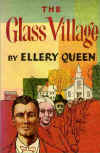 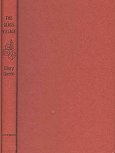  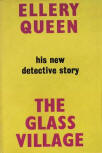     |
| Above (Top left to bottom right): dust and hardcover Little, Brown & co BCE (1954); hardcover Little, Brown & co (1954); dust covers for Gollancz (1954 1st, 2nd & 3rd), hardback Boots Booklovers Library Edition by Gollancz (1954) and Gollancz (1976). * |
| Buffalo Courier-Express,
"Anniversary Mystery Gets Good Rating" by Frank Lillich, September 5. 1954 "Devotees of the mystery writing of Manfred B. Lee and Frederic Dannay, who form the writing team which operates under the byline of "Ellery Queen," probably will greet this 25th anniversary novel by Ellery Queen with mixed feelings. To begin with, the Ellery Queen character is missing completely from the book —the first such omission by the authors. In addition, although there is a murder, the mystery is subordinated to the study of character in a tiny New England village. Nevertheless, there is smooth writing, a solid and perceptive story, some excellent (and unusual) trial scenes and a logical climax. Painter Murdered When Aunt Fanny Adams, a painter who is Shinn Corners' one famous citizen, is murdered, a suspicious appearing tramp is picked up in the neighborhood. The members of the community, remembering what they considered a miscarriage of justice in a trial in the county seat years be fore, decide to hold the trial of the itinerant worker — and condemn him — themselves. Judge Lewis Shinn, who is to preside at the trial, enlists the aid of his nephew Johnny recently of Army Intelligence, to block an unfair verdict of guilty against the tramp. Johnny is maneuvered onto the jury, and investigates from with in while the Judge conducts the trial in such fashion as to make certain any verdict will be set aside as a mistrial. The humor is on the quiet side, as usual in an Ellery Queen novel; the pace is steady, with a mounting tension, and the cast of rural characters is as good as any in the previous 27 novels written by the talented co-authors. The verdict: Good." The Sunday Star, Washington D.C. - "Mystery and Suspense" by Miriam Ottenberg, August 22. 1954 "Queen assays a serious novel in this story of a village gone berserk after the murder of its best-loved citizen. There is a message here. Underlined and reiterated through the words and deeds of an elderly judge. He would remind us that once the rights guaranteed under the Constitution are bypassed in a single case, the rights of all are threatened. Witch hunts in old Salem and certain congressional hearings in Washington are noted in passing. Queen has something to say here — something felt strongly—but he also comes up with a fine travesty of a murder trial and his usual neatly crafted element of mystery." |
|
First novel in which Ellery himself, nor his father appear as character. If we take into account those works, this book is one of the two non-Ellery books worth reading, together with Cop Out (1968). Not coincidentally, both were written by Queen "himself". It sets a claustrophobic atmosphere which works since this novel is supposedly an allegory on and an attack at McCarthyism. |
| Influenced by the realist school, it has a relatively
simple plot for an EQ book, and its mystery ideas derive ultimately from
Crofts' The Cask
(1920). (Michael
E.Grost) It borrows heavily from the setting and characters in a little town in Connecticut where Lee had lived (Rand B.Lee). |
| Shinn Corners is a tiny farming community of about three dozen inhabitants, almost all of whom are strongly imbedded in the Puritan religion. Here we see the links to British mystery in that the story takes place in an isolated community away from other people. One individual, Judge Shinn, represents the only clear thinking around, except for that of an outsider, Johnny Shinn. These two have gone beyond the strict Puritanical philosophy and recognize other forces at work in the world. Johnny Shinn in particular has been in two wars, World War II and Korea, and brings to the New England setting the thinking of a man who has seen the horrors of the world and is left cynical by them. What occurs in the community after one of its number is murdered could not have happened easily if the setting were different. The mood of the story is molded by the buildings, the weather and by what people observe around them. Even the people themselves sometimes appear to be props in the setting rather than characters in the plot. In this sense the novel again demonstrates the formal detective novel’s use of stock characters who add to the mood of the surroundings. |
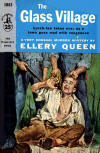       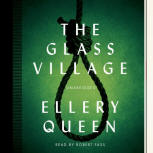 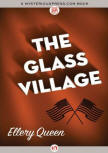 |
| Fanny Adams, famous artist and popular matriarch of the community, is murdered and soon
afterwards a tramp is captured carrying a sum of money exactly the same as that missing
from Fanny’s spice jar. The People of Shinn Corners immediately descend upon the
hapless stranger ready to exact just retribution in the tradition of quick Puritan
justice. The Puritan nature that cherishes privacy demands that the stranger be punished
by the people of Shinn Corners alone, and when representatives of the county seat come to
investigate and take over, the Puritan code fights them off. The people of Shinn Corners
have a confrontation with the county representatives and win the right to prosecute the
tramp mostly due to the clear thinking of Judge Shinn. The Judge stands apart and serves
as the clear-thinking link between the Puritan ethic and pure justice. Worldly-wise Johnny
Shinn becomes the cool-headed cynical assessor of facts and finally discovers the clue
that solves the mystery and seals the fate of the murderer. Although it is certainly an adult book and as such can be read on many different levels, the novel contains no overtly objectionable language or situations. It is written in a marvelously clear fashion with several build-ups in the plot as it reaches the climax. The Puritan philosophy necessary to understand its impact on the setting is adequately explained early in the book, so that research into Puritanism, while naturally beneficial, is not necessary. The closed society, slowly dying, ensures that only a place like Shinn Corners could be the setting for the events of the novel. The setting is an essential factor in fully enjoying and understanding the story. Foreshadowed by the map of Shinn Corners, the first image the reader finds. The parochial look of the place is instantly apparent, and the closeness of the place is striking. The town is totally surrounded by woods and even on the page looks like a completely isolated community. Even the narrative bears out that first impression. The drive from Cudburry to Shinn Corners is an increasingly deeper trip away from what looks like normal civilization. The main character, Johnny Shinn, becomes more depressed as he nears Shinn Corners. The foreboding feeling about the place is that time stands still there, and nothing productive is going to happen in the decaying society. Early on in the narrative, another group of setting contextual clues is introduced. Judge Shinn talks about the social shortcomings of the Puritan thought of Shinn Corners residents, and how impossible this philosophy is in modern times. The Judge proves how firmly set Puritanism is in town with an anecdote about the one time the citizens allowed the outside community to intrude, and the disastrous results that occurred. A third group of setting context clues is introduced through the character of Johnny Shinn. He is an army officer who has recently returned from the Korean War, in which he was an intelligence officer, and he represents the outside world, its philosophies, societies and forward thinking. The ultimate use of setting is how the murder is solved. A painting by the victim, Fanny Adams, provides the final clue. (based on paper by Patrick A. Velardi) |
| The Herald, Melbourne -
"Crime Marches On" by A.R. McElwain, October 10. 1954 "Who struck down Aunt Fanny? ALTHOUGH it bears Mr. Ellery Queen's distinguished imprimateur, 'The Glass Village' is not so much a detection thesis as a shattering picture of small town minds on the loose. In an American backwater township lives an old duck named Aunt Fanny Adams. She's modeled, with little attempt at disguise on Grandma Moses, the celebrated painter of primitives. Grandma like Aunt Fanny, didn't start diddling around with paints till she was 80. Home loon is daring enough to strike down lovable Aunt Fanny at her very easel. Then the locals, anti -'furriner' and anti everything from beyond their own neck of the woods, not only pick on a Polish migrant as the murderer but decide to deal with him summarily. Superior Court Judge Lewis Shinn, one of the local boys, realizing that even if they get the Pole to court, he won't have the slightest chance of a fair trial, and unable to get a change of venue, proceeds to cook up the most monstrous judicial charade I've ever encountered. He 'fixes' prosecutor and defense counsel plants his well-primed kinsman, Johnny Shinn, on the Jury, and ensures during the trial that every known rule of evidence and procedure is flouted. The idea is that when the foregone "guilty" verdict is returned a re-trial in another and more enlightened part of the State, will be inevitable. It doesn't quite work out this way. The whole farcical business ends when Johnny Shinn exposes the real murderer. Such elements of detection as emerge when Mr. Queen gets down to them are put across in his usual slick style. But the judicial hocus pocus seems to me to be straining even to the Queen's operative." |
|
Chosen as one of the best mystery stories of the year by The Mystery Writers of America. This story was adapted to serve as an Ellery
Queen episode for TV's
The Further Adventures of
Ellery Queen (NBC). "The Glass Village"
(Sep 26.
1958) was directed by Walter Grauman and had George
Nader in the role of Ellery Queen. |
|
The Glass Village Translations: |
|
|
|
Other articles on this book (1) The Glass Village -- Suspending Disbelief? Dale C. Andrews (27 March 2016) (2) Reading Ellery Queen Jon Mathewson (Sep 2015) |
|
*
Interested readers should know
that the icons/covers
of books, used throughout the
website have extra
descriptions/information not
included in the text on the same
page. Pointing your cursor at
the icon/cover used to reveal
this extra information. To achieve the same effect Firefox users can install an add-on called 'Popup ALT Attribute'. When installed pointing your cursor at an icon/cover results in showing you the details or additional information. |
|
Copyright © MCMXCIX-MMXXV Ellery Queen, a website on deduction. All rights reserved. |